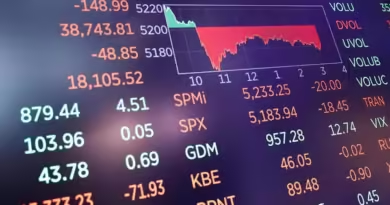Why shouldn’t investors sell BSE despite the potential hit to future profits?
Large cash on the books can be expected to be returned to shareholders by way of higher dividend payouts or buybacks.
The stock of the BSE (CMP: Rs 2,824; Mcap: Rs 38,124 crore; Rating: Overweight) corrected over 13 percent on Monday following the SEBI’s directive to pay regulatory fees on notional turnover for options instead of premium.
Even with the sharp fall, the BSE has been the best performing stock in recent times. The stock has zoomed more than 400 percent in the last one year.
The stock’s exponential rise can be attributed to the immense progress made by the exchange after the relaunch of equity derivative products in May ’23. The BSE’s market share improved to 21 percent in April ’24 from nil in April ’23 in terms of total turnover in the equity derivatives segment, which is now dominated by the NSE.
The rapid market share gain is a big positive. But the regulatory diktat will adversely impact the exchange’s profit and cash flows. The moot question is whether this will end the dazzling rally in the stock. What should investors do now? Let’s first understand the ruling and its likely impact.
SEBI has informed BSE that the exchange needs to pay regulatory charges on notional turnover and not on premium turnover as the exchange has been doing so far.
In the letter, the regulator has asked the exchange to pay the difference in amount retrospectively (from the time it has launched derivatives) along with an interest of 15 percent per annum on the outstanding dues for every month of delay.
How much amount BSE will have to pay?
The BSE has informed that it is evaluating the validity, or otherwise, of the claim, as per the SEBI communication.
If it is ascertained that the said amount is payable, then the additional SEBI regulatory fees for the past period — from FY07 to FY23 — would be around Rs 68.64 crore plus GST which includes an interest of Rs 30.34 crore.
Investors should note that BSE’s turnover in derivatives till FY23 was not much. However, it jumped manifold in FY24 following the relaunch of the Sensex and Bankex derivative contracts in May ’23 with a reduced lot size and a change in the expiry days. In a year’s time, BSE’s market share has risen to 21 percent in April ’24 from nil in April ’23 in terms of total turnover in the equity derivatives segment.

The BSE has paid Rs 1.66 crore plus GST as per premium turnover for FY24. However, the additional SEBI regulatory fees for FY24, if liable, could be around Rs 96.30 crore plus GST which is to be paid by April 30, 2024.
What will be the impact on profitability ?
The BSE will have to make a one-time provisioning for all the past dues (till end FY24) which would be around Rs 164 crore. However, these regulatory charges will be recurring cost and will be higher in the future as BSE’s notional turnover in equity derivatives is rising. The future impact is a bigger concern as it will lead to the downgrading of future earnings and will limit the stock upside.
BSE might take a price hike
In all likelihood, the BSE may increase prices on equity derivatives to mitigate the impact of higher regulatory cost. The BSE took the first step to monetise the success of the F&O segment by increasing transaction charges (slab-wise structure) on Sensex options (only on near expiry) with effect from November 1, 2023. Despite the last hike, the BSE’s charges are still lower compared to the NSE.
It is worth noting that while the price hike can partially or fully off-set the incremental regulatory costs, it can potentially reduce the pace of market share gains if charges are on a par with the NSE.
What should investors do?
At the current market price, the BSE stock is trading at 44 times estimated core earnings for FY26. Investors shouldn’t exit in a jiffy as there is high chances of price hikes. Some clarity may emerge after the FY24 earnings are announced on May 8.

Bymoneycontrol




